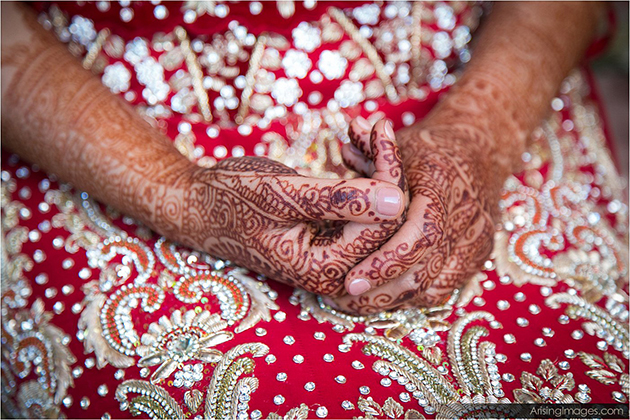
Photo: Arising Images
Weddings are a celebration of love and commitment, and can also be a celebration of the couple’s religion and culture. One such ceremony that you might not be so familiar with? A Hindu wedding. Whether you’re invited as a guest, attending as a member of the wedding party, or are simply curious, there are a few key components you’ll see time and again. Here, our experts break down a Hindu wedding ceremony for you.
Traditional Hindu weddings fall, generally, along two lines: North Indian Hindu weddings and South Indian Hindu weddings. While both ceremonies are incredibly colorful — and might require taking a few days off of work to attend the full range of festivities — the rituals themselves vary. Here are a few rituals you may see if you’re celebrating a Hindu union.
The Wedding Mandap
The wedding mandap is a temporary structure constructed for the purpose of the marriage ceremony. It may appear on an elevated platform, and is decorated with anything from flowers and greenery to fabric and crystals.
Mehndi
During the mehndi ceremony, henna is used to apply intricate designs to the bride’s hands and feet. The mehndi ceremony usually takes place one day before the marriage will be held, as the application can take hours!
Jai Mala
This is the part of the ceremony during which the bride and groom exchange floral garlands. The exchange of floral garlands is particularly important in South Indian Hindu weddings.
See more: A Vibrant Indian Wedding Outside of Detroit
Kanyadaan
Otherwise known as the moment when the bride’s father gives her away, the father of the bride symbolically places his daughter’s hand into the hand of her fiancé. He may also pour water into the bride’s hand, which will flow through her fingers and into the hand of her groom.
Saptapadi
An important ritual in North Indian Hindu weddings, at this point in the ceremony, the bride and groom have their garments tied together, then take seven steps together (or make seven circles around a ceremonial fire) as they make vows to one another regarding the happiness and success of their marriage.
Sindoor
This is the red-orange powder applied to the part of a woman’s hair, symbolizing that she is married. It is applied to her part for the first time during the marriage ceremony.
